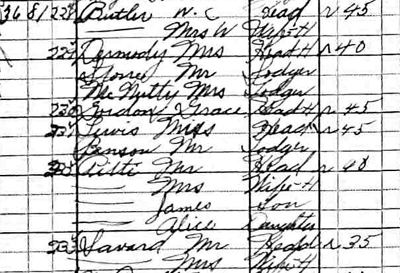 In the previous article, we talked about finding clergy in the census by using titles in place of a given name. This can also be a solution for lay people. Search for Mr. or Mrs. and you’ll turn up plenty of hits. (Click on the image to see an example from the 1930 census for Boston, Massachusetts.) And the town doctor could be listed with Dr. as his first name. Dr. and Mrs. Cooneery of Chicago, Illinois, are a good example of this situation. Here are some more tips for census searching.
In the previous article, we talked about finding clergy in the census by using titles in place of a given name. This can also be a solution for lay people. Search for Mr. or Mrs. and you’ll turn up plenty of hits. (Click on the image to see an example from the 1930 census for Boston, Massachusetts.) And the town doctor could be listed with Dr. as his first name. Dr. and Mrs. Cooneery of Chicago, Illinois, are a good example of this situation. Here are some more tips for census searching.
Search for Initials
Sometimes the census taker decided that listing an initial was enough. In searching for my Kelly ancestors in New York City, I was repeatedly frustrated in my attempts to locate one family—until I left out the given name. When I saw the results I noticed an abundance of initials in place of given names. Once I entered the appropriate initial, I found the family I was searching for—with every family member listed with only an initial.
Leave Out the Name
While it might seem a long shot, sometimes the best way to search is without a name. If you know where your ancestor lived, try leaving out the name entirely and use other facts you have to narrow your search. For example, I know my grandparents were living in Parma, Ohio, in 1930 and had been recently married. By entering my grandmother’s birth year, birthplace of Ohio, residence of Parma, Ohio, and relationship to head of household (wife), she comes up as the thirteenth record on the list of results for that search.
Search for Siblings
Try searching for various siblings. While your direct ancestor’s entry may be hard to read or transcribed incorrectly, the sibling’s entry may be correct. I was helping my uncle find his parents in 1930. The last name was mangled, so I entered his brother’s given name, specified the county, and added in the given names of his father and mother. Even though all three had common given names (Charles, Henry, and Mary) those names, relationships, and the county were enough to allow me to find them. Continue reading






